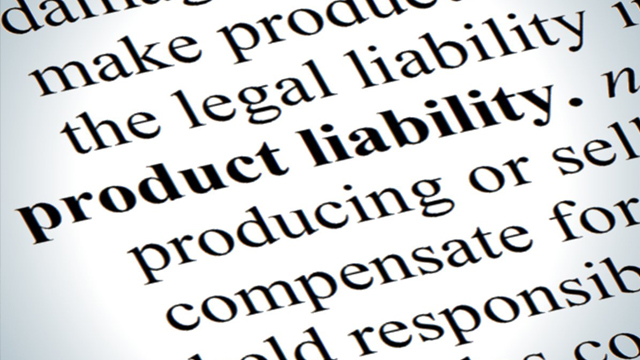If you suffer injury or loss due to product liability, you may be able to collect compensatory or even punitive damages. Product liability claims can be categorized in three different ways although the spectrum of products and injuries is broad. These three categories are:
1) Defective manufacturing: An example of defective manufacturing would a b a step ladder with poorly attached steps that come loose during normal use.
2) Defective design: Examples of defective design might be a reclining chair that tips over backwards when used properly
3) Failure to provide adequate warnings or instructions regarding the proper and intended use of the product: Drugs that have known side effects or may adversely interact with common medications without printed warnings are examples.
To determine whether you have a case, it is necessary to understand the three categories. Once the potential claim is categorized the following elements must be proven
· You were injured or suffered losses
· The defect, poor design or lack of warning was the actual and proximate cause of the injury
· The product was being used as intended
When it is apparent that the above elements can be proven, your product liability attorney will determine what types and amounts of damages you have suffered through a careful evaluation process. If you suffered large amounts of damages it is important to make that determination quickly and keep detailed records throughout the recovery process.
What Are Damages?
There are two types of damages that can be recovered in product liability cases which are to compensate the plaintiff for injury and losses or to punish the defendant for wrongdoing. Referred to as compensatory or punitive, the term “damages” basically means a sum of money paid to the plaintiff by the defendant though a settlement or award. The amount of damages in product liability cases can range from minimal to substantial, depending on many factors such as the severity of an injury, the impact on one’s life, the history of similar cases and the ability of the defendant to pay and more. In cases of widespread claims, plaintiffs may join others in class action lawsuits or the cases by be consolidated into multidistrict legislation and bellwether cases may be heard to help in determining future settlements.
What Are Compensatory Damages?
Referred to also as actual damages, compensatory damages are intended to restore the plaintiff to their condition prior to the injury. Of course, it is not always possible to restore a person to their original condition in cases of permanent injury. In those cases, compensatory damages provide what is determined to be the monetary equivalent of the injury and economic loss.
Types of Economic Loss
Sometimes referred to as monetary losses, economic loss refers to money or property lost or precluded due to the injury. Some of the more common economic losses are:
Medical expenses. Demand for medical expenses can include not only current doctor bills, hospital bills, physical therapy, pharmacy expenses and more, but also those in the future. You may need to be on a certain drug for the rest of your life or require long term physical therapy.
Loss of income or profits. If your injury kept you out of work, or unable to run your business, you may claim loss of wages or profits. If you are unable to work for the rest of your life or work only in a lower earing capacity, you can claim loss of future wages. This figure is often greatly underestimated. A surgeon whose hands become unsteady after neurological damage, could suffer millions of dollars in lost income over his career. He could still practice medicine but in a reduced capacity.
Cost of Disability. If your injury forces a change of lifestyle, the cost of making those changes may entitle you to compensation. Installing a stair climbing machine, hiring domestic help are two examples of cost of disability.
Loss or repair of property. If a defective product caused destruction of your property, you may be entitled to the cost to repair or replace. A perfect example is the hoverboard house fire that destroyed a home.
Non-Economic Losses
Non-economic losses are more difficult to assess than economic losses. They include physical and emotional pain and suffering. The two most common forms of non-economic loss are pain and suffering and loss of consortium.
Pain and suffering. The size of pain and suffering awards vary greatly from one case to another. Lawyers will refer to similar past cases to estimate the value for pain, anguish, or diminished quality of life, but the spread between awards is often wide due to intangibility.
Loss of consortium. If the relationship with a spouse or partner is significantly impacted negatively, you may be able to recover damages for loss of consortium. This may include loss of companionship, affection, sexual relations of emotional support. Your spouse of partner may also have a claim for loss of consortium in these cases.
The Product Liability Lawyer
Anyone who is injured, or suffers a loss due to what they believe is product liability they need to contact a product liability lawyer as soon as possible. It requires a lawyer with a proven track record in these difficult cases to make a proper evaluation and recover the damages to which you are entitled. If you or a loved one were injured or suffered a loss, contact Vititoe Law Group today for a free evaluation of your case.








